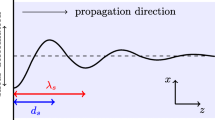Abstract
Applicability and limits of time-resolved rheometry have been analyzed for polymers which undergo change during a theological measurement. Processes such as gelation, phase transition, polymerization or decomposition affect the molecular mobility in these polymers and therefore the rheological experiment. We propose to choose the well known effect of heating (or cooling) during the relaxation and analyze it as a paradigm for rheometry on samples with changing molecular mobility. The temperature change does not cause permanent changes in sample structure, but it affects the molecular mobility and it significantly interferes with the measurement if the temperature changes occur too fast. In this study, time-resolved mechanical spectroscopy (TRMS) was used to experimentally investigate the effect of heating on the relaxation behavior of a typical polycarbonate sample. Each data point in a cyclic frequency sweep (CFS) was taken at a different state of the material; the data were interpolated using an interactive computer program. In this fashion, a single TRMS experiment yielded a master curve over eight decades. A model for relaxation under non-isothermal conditions showed the limitations of TRMS. It could be demonstrated that TRMS worked well for sufficiently small mutation numbers, i.e., for sufficiently small changes during the measurement. A critical mutation number of 0.9 was determined for the non-isothermal case beyond which the material response became non-linear. This corresponds to a calculated relative change of the shear stress amplitude of about 90%.
Similar content being viewed by others
References
Baumgärtel M, Winter HH (1989) Determination of discrete relaxation and retardation time spectra from dynamic mechanical data. Rheol Acta 28:511–519
Baumgärtel M (1990) unpublished results
Bird RB, Armstrong RC, Hassager O (1987) Dynamics of polymeric liquids, 2. ed. J Wiley & Sons, New York
deBoor C (1978) A practical guide to splines. Appl Math Sci, Vol 27, Springer-Verlag, Berlin
Chambon F, Winter HH (1985) Stopping of crosslinking reaction in a PDMS polymer at the gel point. Polym Bull 13:499–503
Chambon F, Petrovic ZS, MacKnight WJ, Winter HH (1986) Rheology on model polyurethanes at the gel point. Macromol 19:2146–2149
Craven P, Wahba G (1979) Smoothing noisy data with spline functions. Num Math 31:377–403
DeRosa ME, Winter HH (1994) The effect of entanglements on the theological behavior of polybutadiene critical gels. Rheol Acta 33 (in press)
Ferry J (1980) Viscoelastic properties of polymers, 3. ed. J. Wiley & Sons, New York
Holly EE, Venkataraman SK, Chambon F, Winter HH (1988) Fourier transform mechanical spectroscopy of viscoelastic materials with transient structure. J Non-Newtonian Fluid Mech 27:17–26
Hopkins IL (1958) Stress relaxation or creep of linear viscoelastic substances under varying temperature. J Pol Sci 28:631–633
Morland LW, Lee EH (1960) Stress analysis for linear viscoelastic materials with temperature variation. Trans Soc Rheol 4:233–263
Press WH, Flannery BP, Teukolsky SA, Vetterling WT (1989) Numerical recipes, the art of scientific computation. Cambridge University Press, Cambridge
Reiner M (1964) The Deborah number. Physics Today 17:62
Reinsch C (1967) Smoothing by spline functions. Num Math 10:177–183
Scanlan JC, Winter HH (1991) The evolution of viscoelasticity near the gel point of endlinking poly(dimethylsiloxane)s. Makromol Chem, Macromol Symp 45:11–21
Scanlan JC, Winter HH (1991) Composition dependence of the viscoelasticity of end-linked poly(dimethylsiloxane). Macromol 24:47–54
Wahba G (1990) Spline models for observational data. Society for Industrial and Applied Mathematics, Philadelphia
Winter HH, Chambon F (1986) Analysis of linear viscoelasticity of a crosslinking polymer at the gel point. J Rheol 30:367–382
Winter HH, Morganelli P, Chambon F (1988) Stoichiometry effects on theology of model polyurethanes at the gel point. Macromolecules 21:532–535
Author information
Authors and Affiliations
Additional information
Dedicated to Prof. Ken Walters on the occasion of his 60th birthday.
Rights and permissions
About this article
Cite this article
Mours, M., Winter, H.H. Time-resolved rheometry. Rheol Acta 33, 385–397 (1994). https://doi.org/10.1007/BF00366581
Received:
Revised:
Issue Date:
DOI: https://doi.org/10.1007/BF00366581



